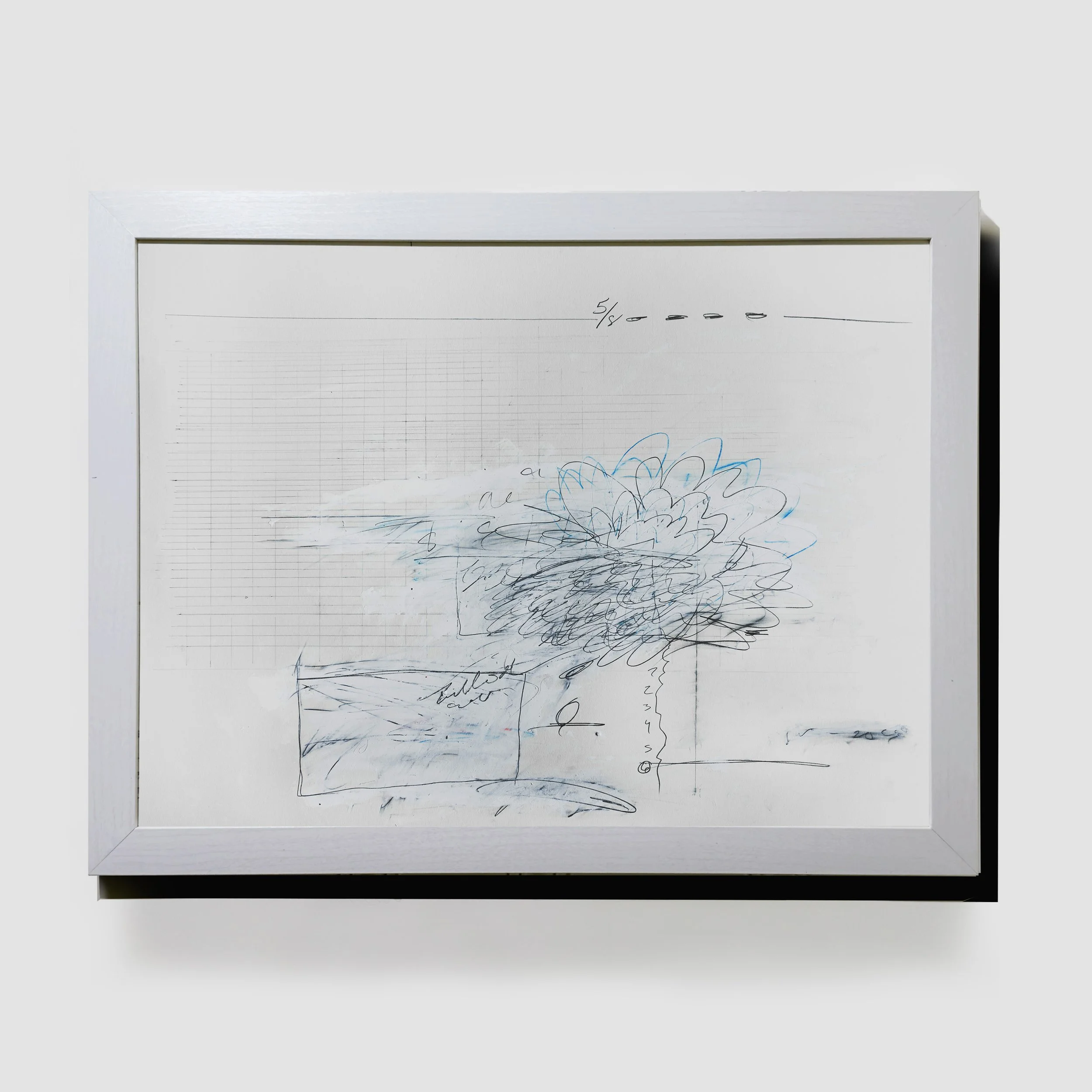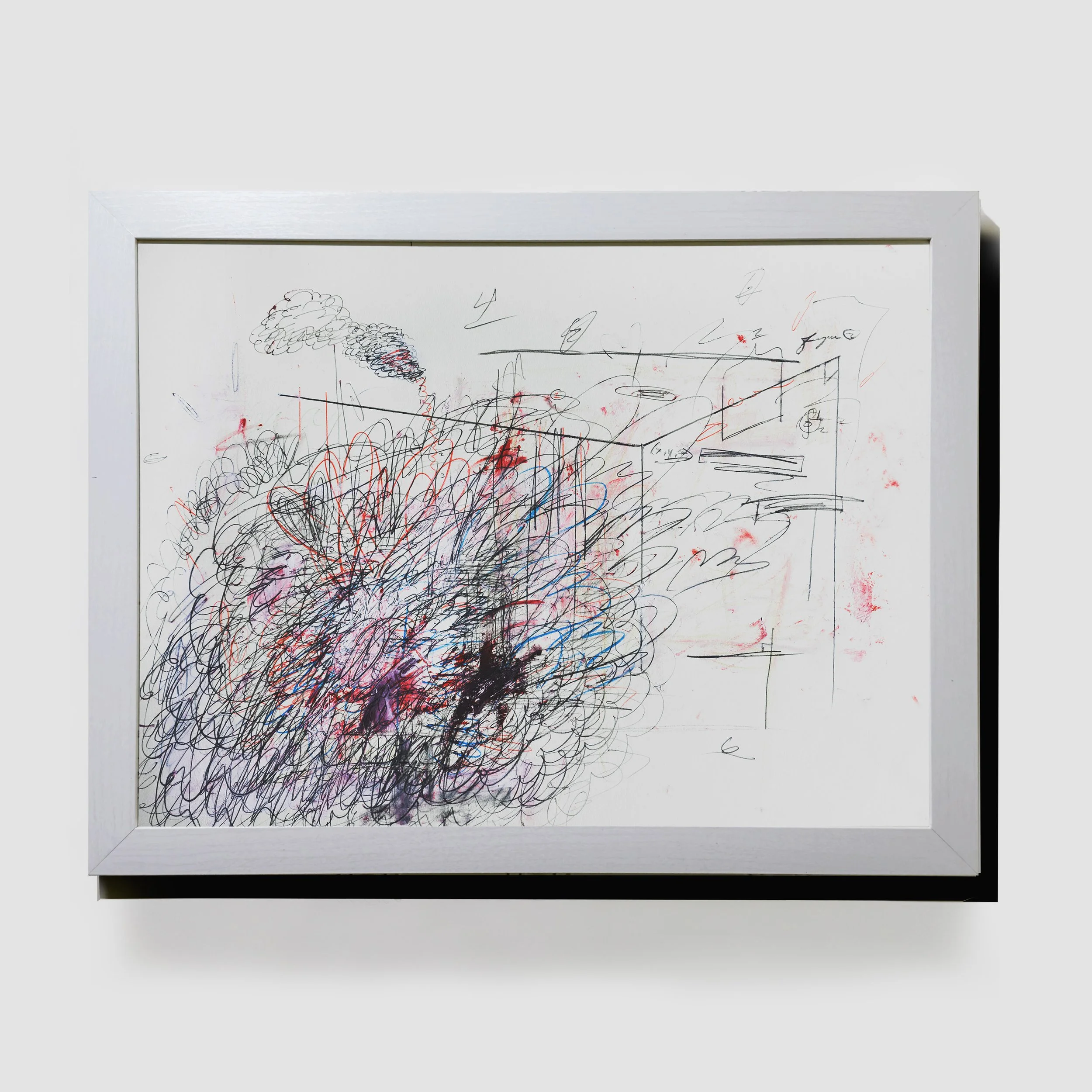
EVIDENCE OF THE BEAUTIFUL MIND
Evidence of the Beautiful Mind explores the unconscious fragmentation of thoughts, feelings, and dreams through information design and abstract drawing. Inspired largely by the scientific works of statistician Edward Tufte, psychoanalyst Sigmund Freud, and the collective oeuvres of Cy Twombly, Agnes Martin, and Mark Lombardi, “Evidence” operates at the intersection between psychology, art, and systemic visualization.
The series’ conceptual anchors involve the inversion of Tufte’s methods for clarifying complexity within data structures, and fusing it with Freud’s theories of dream logic, free association, repressed thought, and symbolic substitution. These drawings don’t display data in the traditional way; they dramatize the impossibility of doing so when the subject is the unconscious. In this way, it acts as the antithesis to Tufte. Not in ignorance of his method, but in deliberate resistance to its applicability to the interior world.
The work is a repeat of visual symbols featuring: grids, numbers, erased words, stains, and of course scribbles. Each derived from a place you almost remembered you had forgotten. While this visual language is consistent throughout, they each compete within totally different structures. Some unfold with loud and explosive gestures, while others are more restrained and diagrammatic, inviting closer inspection. This tension between chaos and control is the mirror of the internal architecture of the psyche.
Meant to be viewed like an architect’s sketchbook, canvas was ditched in favor of large format paper in order to evoke a working laboratory of the internal world. It’s waking up and immediately writing down that dream you had, drawing on a napkin in a meeting, or even just letting all the thoughts out in your journal. It imagines what happens when unconscious material is filtered through systems of measurement and when it fails to render order.
Rather than aiming for narrative clarity or definitive conclusions, the series embraces ambiguity as a method. The viewer is asked to navigate these works the way one might navigate a dream. It becomes not just a record of thought, but a visual enactment of thinking itself: fragmented, recursive, symbolic, and deeply human.
“Evidence” suggests something radical: that truth might live in fragmentation. That we are not, at our core, organized, but rather in a constant state of craving to be. Tufte may succeed in satisfying this craving, but ego demands something deeper and ultimately more true.
index 103
18x24
pencil, oil, ballpoint pen on framed paper
index 480
18x24
pencil, oil, ballpoint pen on framed paper
index 270
18x24
pencil, oil, ballpoint pen on framed paper
index 532
18x24
pencil, oil, ballpoint pen on framed paper
index 266
18x24
pencil, oil, ballpoint pen on framed paper
index 435
18x24
pencil, oil, ballpoint pen on framed paper
index 640
18x24
pencil, oil, ballpoint pen on framed paper
index 337
18x24
pencil, oil, ballpoint pen on framed paper
index 465
18x24
pencil, oil, ballpoint pen on framed paper
index 330
18x24
pencil, oil, ballpoint pen on framed paper
index 982
18x24
pencil, oil, ballpoint pen on framed paper
index 657
18x24
pencil, oil, ballpoint pen on framed paper
index 099
18x24
pencil, oil, ballpoint pen on framed paper













